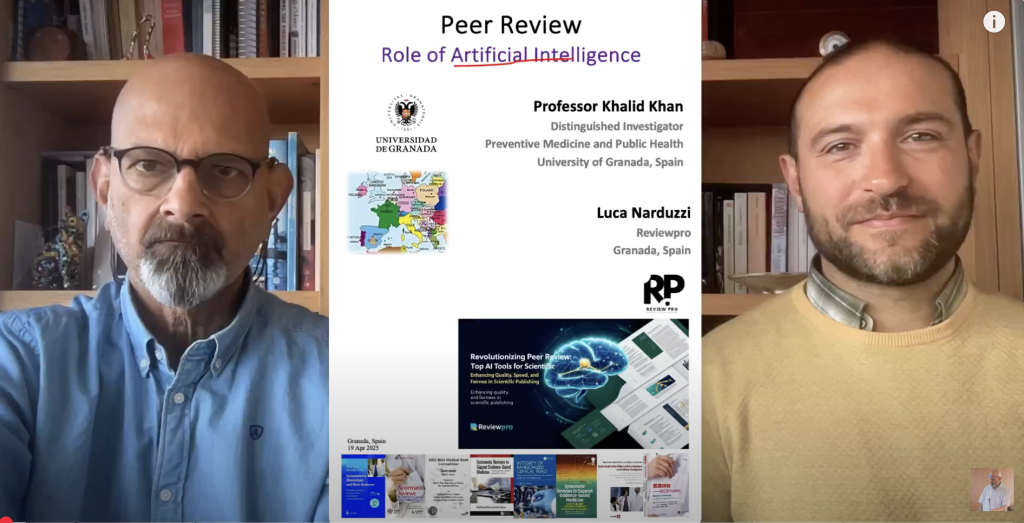Editors play a central role in AI in peer review, especially as new technologies are reshaping traditional workflows. While they bring years of experience managing scientific journals, editors are still human—and prone to common mistakes that can compromise the fairness, speed, and reliability of the publication process. This article identifies five editorial errors and explores how artificial intelligence is becoming a crucial ally for modern peer review.
In this article, we identify five common mistakes editors make during the peer-review process, and explore how AI in peer review is emerging as a powerful tool to address them—enhancing both speed and fairness in scholarly publishing.
1. Inadequate Reviewer Selection
One of the most frequent editorial pitfalls is selecting reviewers who lack the appropriate subject-matter expertise or who may have conflicts of interest. The consequences are severe: superficial or biased reviews, misplaced rejections, or even the acceptance of substandard research.
How AI can help:
Artificial intelligence can assist editors in matching manuscripts with suitable reviewers by analyzing publication records, areas of expertise, and conflict indicators. Platforms like ReviewPRO use dedicated algorithms to ensure that the review process is based on expertise rather than convenience or personal networks.
Discover how ReviewPRO is building a global community of professional reviewers and compensating them fairly to ensure quality and speed in peer review.
👉 https://reviewpro.io/for-reviewers
2. Reducing Review Delays with AI in Peer Review
Extended review timelines frustrate authors, reduce a journal’s competitiveness, and delay the dissemination of critical findings. Editors often unintentionally contribute to this problem by failing to follow up with reviewers or by relying on unresponsive or unqualified candidates.
How AI and automation can help:
AI-based dashboards and automated notifications can help editors monitor the review process in real time, reducing bottlenecks. Additionally, emerging technologies like blockchain in peer review are being explored to bring accountability and time-stamped traceability to the editorial process.
3. Unfair Desk Rejections
Desk rejections are sometimes necessary due to high submission volumes, but when based on limited or biased assessment, they can unfairly exclude high-quality research. Editors may overlook papers due to workload, unconscious bias, or insufficient familiarity with niche topics.
How AI tools can support fairness:
AI-powered manuscript screening tools can help editors perform consistent, objective evaluations of a submission’s originality, methodological soundness, and adherence to guidelines—offering a transparent first layer of assessment before editorial discretion is applied.
4. Using AI Tools in Peer Review to Address Ethical Risks
From plagiarism and duplicate submissions to data fabrication and lack of informed consent, ethical concerns are not always easy to detect. Editors may assume reviewers will flag these issues, but that is not always the case—especially if reviewer selection was inadequate.
How AI can assist with ethics in publishing:
AI tools trained to detect plagiarism, incomplete disclosures, or missing ethical approvals can flag submissions that require further attention. Combining human oversight with machine-based screening significantly improves the detection of ethical red flags.
5. Ignoring the Clarity and Quality of Writing
A manuscript may contain novel and important findings, but if it is poorly written or disorganized, its impact is diminished. Language issues can obscure meaning and limit accessibility for a broader audience.
How AI enhances editorial support:
Editors and reviewers can recommend AI-powered writing tools that help authors improve grammar, coherence, and structure without altering scientific content. Integrating this step into the editorial workflow improves article quality and reader comprehension.
Conclusion: Why AI in Peer Review Is Essential for Editorial Integrity
Editorial work is complex and demanding—but technology can help. By integrating AI in peer review, editors can overcome common challenges such as reviewer selection, timeline management, ethical screening, and writing evaluation. These tools are not meant to replace editorial judgment, but to enhance it—making peer review faster, more consistent, and more transparent.
If you’re a journal editor looking to improve your review process, ReviewPRO offers AI-powered peer review solutions that combine human expertise with technological innovation.
Learn more about how ReviewPRO combines AI and blockchain to bring transparency to academic publishing workflows.
👉 https://reviewpro.io/blog/ai-blockchain-peer-review


